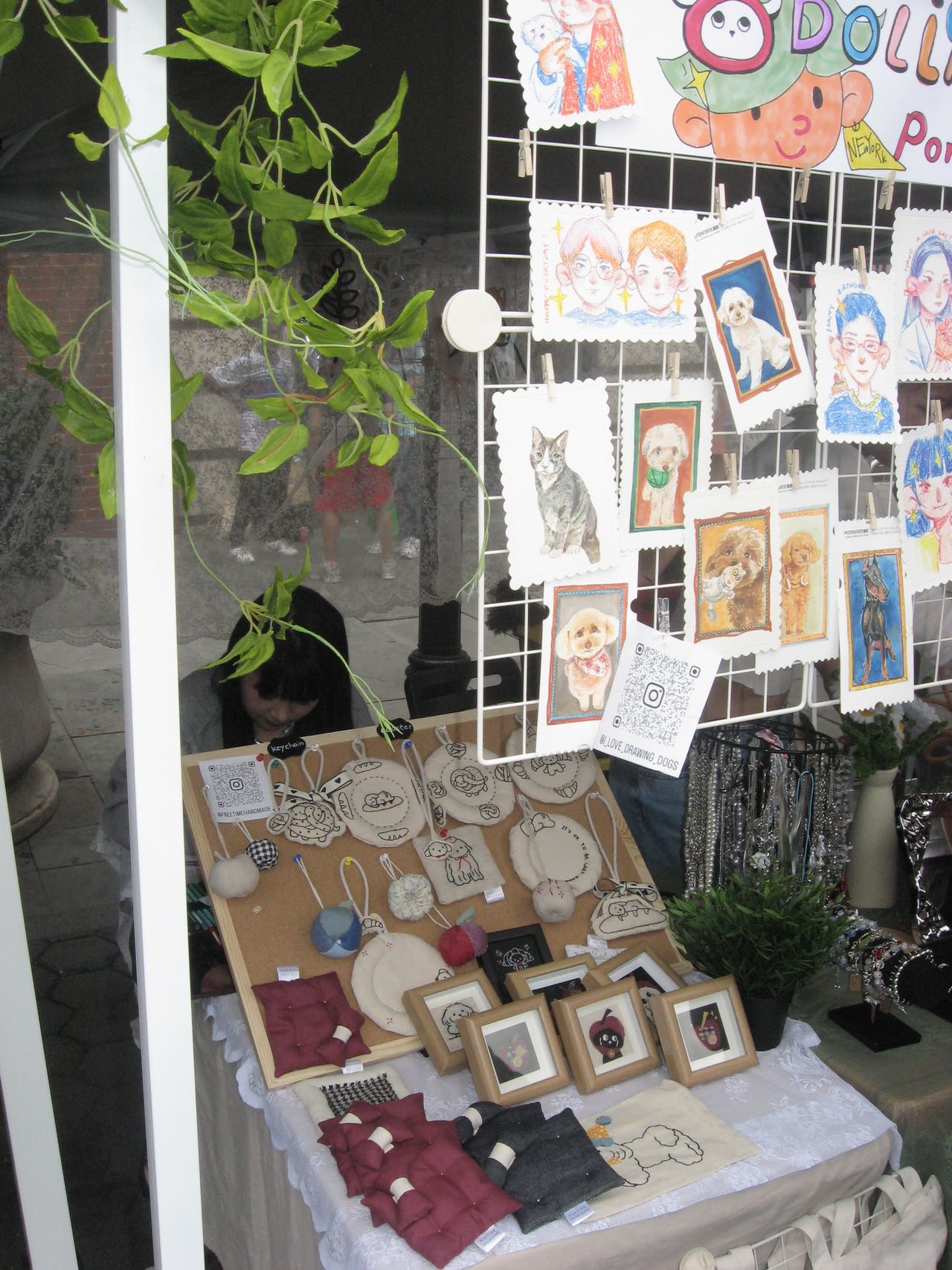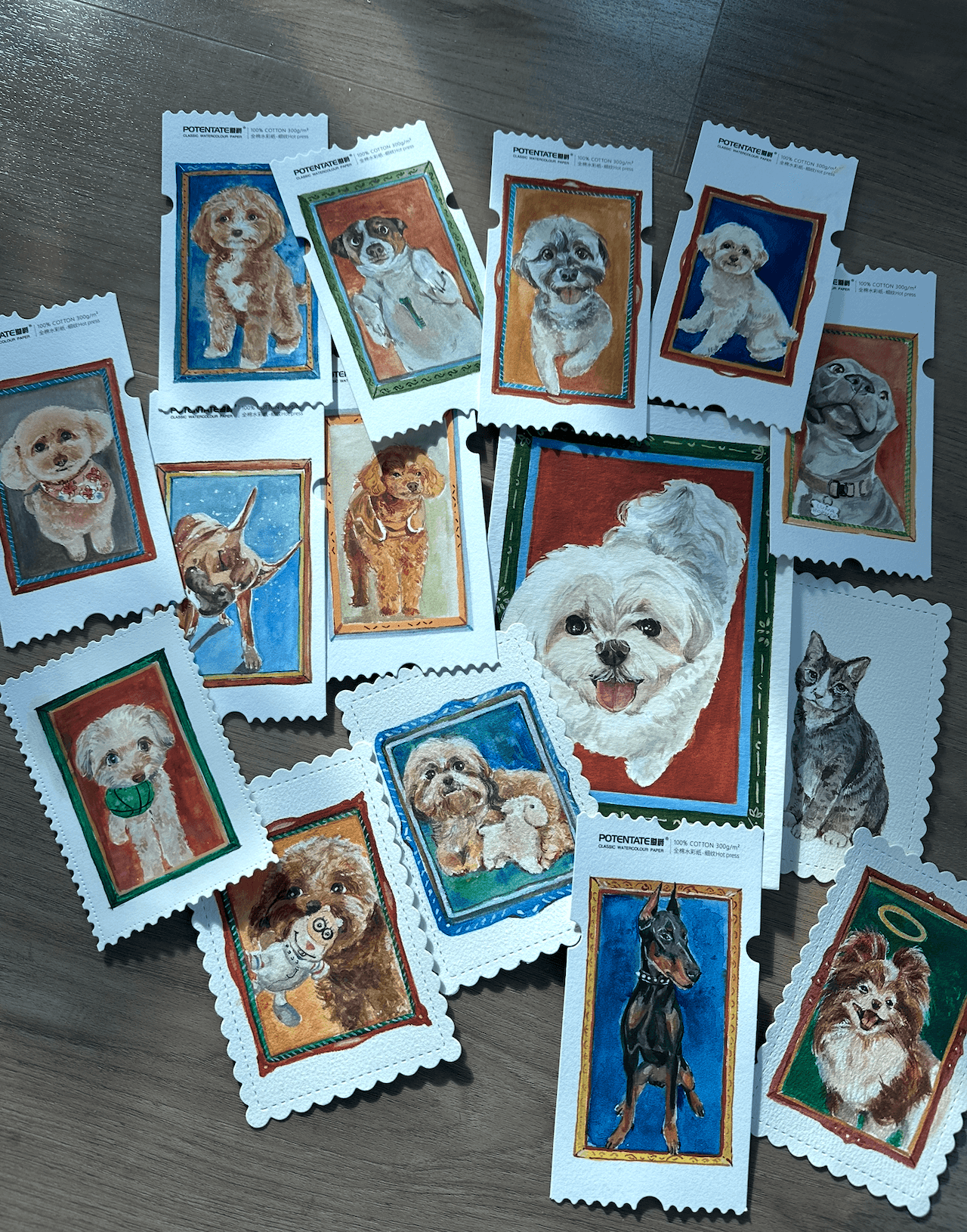We caught up with the brilliant and insightful Maxine Yuling Zhou a few weeks ago and have shared our conversation below.
Hi Maxine Yuling, thanks for joining us today. Are you happier as a creative? Do you sometimes think about what it would be like to just have a regular job? Can you talk to us about how you think through these emotions?
That’s such an interesting question. I actually decided I wanted to be a creative when I was six years old—I told my parents back then that I wanted to turn art into my career. That dream has stayed strong ever since. I just graduated this May with my MFA from SVA (School of Visual Arts), and now I’m working as a motion designer, which I absolutely love. I get to make the kind of art I enjoy and make a living from it. That feels pretty magical.
Do I ever think about having a “regular job”? Honestly… what is a regular job? I feel like motion design is a regular job! I work full-time hours, I have deadlines, meetings, client notes—it’s structured, it’s demanding, and it’s very real.
On weekends, I also take on another identity—I go to local art markets where I paint custom pet portraits and sell handmade accessories. That’s not in conflict with my weekday job—it actually fills me up in a different way. I get to connect directly with people, hear their pet stories, and turn those stories into art.
So no, I don’t really fantasize about leaving this creative path for something more “normal.” I’ve built a life that blends passion and work, weekday and weekend, digital and handmade. And for me, that feels perfectly complete.

As always, we appreciate you sharing your insights and we’ve got a few more questions for you, but before we get to all of that can you take a minute to introduce yourself and give our readers some of your back background and context?
Hi! I’m Maxine Zhou (Yuling Zhou), a motion designer and illustrator based in New York. I specialize in blending 2D and 3D techniques to create colorful, emotionally driven motion work. My background in traditional illustration continues to inform the way I approach design, storytelling, and composition—I want every frame to feel like a piece of art on its own.
I’m drawn to projects that sit between playful and poetic. I often incorporate vibrant colors, stylized shapes, and a mix of hand-drawn and digital elements to explore themes like identity, memory, and imagination. I enjoy working across formats—from animated short films and music visuals to commercial design and branding.
What sets me apart is how I blend fine art sensitivity with motion design precision. I’ve spent years developing my visual language, and I’m always experimenting with how to combine tools like Cinema 4D, After Effects, and hand-drawn illustration to build something both striking and human.
I’m proud of the work I’ve done that connects with people—whether it’s an animated piece that moves someone emotionally or a playful sequence that sparks curiosity. What I hope people notice about my work is that it’s personal, honest, and full of feeling.
In your view, what can society to do to best support artists, creatives and a thriving creative ecosystem?
I think the best way society can support artists and creatives is by recognizing that creativity isn’t just decoration—it’s communication, innovation, and connection. A thriving creative ecosystem needs more than just admiration from a distance; it needs real, structural support.
That means funding the arts, yes—but also creating more accessible opportunities, fair wages, and sustainable work environments for creatives at all levels. It means valuing creative labor not only in museums or studios, but in classrooms, companies, and communities. It also means respecting the time it takes to create something meaningful—not everything can (or should) be rushed for content or clicks.
We also need a more inclusive mindset—one that embraces all forms of art, not just what’s considered “high” or traditional. Art is not one thing. It can be loud or quiet, digital or handmade, experimental or commercial. Every form has value. Supporting a creative society means recognizing that diversity in expression is what keeps the creative world alive and evolving.
As someone who works in motion design, I also think it’s important to break down the false divide between “fine art” and “commercial art.” Designers, animators, illustrators—we’re all part of the same creative conversation, and we all deserve visibility, respect, and fair compensation.
Lastly, one of the simplest but most powerful things people can do is support emerging creatives—share their work, pay them fairly, credit them properly, and show up for them. That encouragement, especially early on, can mean everything.

Do you think there is something that non-creatives might struggle to understand about your journey as a creative? Maybe you can shed some light?
One thing I think non-creatives might struggle to understand is just how much time, thought, and invisible labor goes into what we make. From the outside, a finished animation or illustration might look effortless—playful, clean, polished. But behind that simplicity is often weeks or even months of work.
A good piece of creative work doesn’t just “happen.” It goes through rounds of ideas, sketches, failures, reworks, technical problem-solving, and emotional ups and downs. From concept to execution, every choice is intentional—color, timing, movement, texture—nothing is random. And sometimes, just making something look simple is the hardest part.
People often think creatives “just draw” or “just animate,” but in reality, we’re also directing, designing, storytelling, editing, managing timelines, and constantly learning new tools and workflows. It’s deeply creative, but also deeply technical and demanding.
So if you ever look at someone’s work and think, “That looks so fun,” it probably was—but it was also work. And behind that work is care, discipline, and a whole lot of patience.
Contact Info:
- Website: https://maxineyulingzhou.com
- Instagram: maxineyulingzhou
- Linkedin: https://www.linkedin.com/in/yuling-zhou-471473182

Image Credits
All images credits go to Maxine Yuling Zhou


